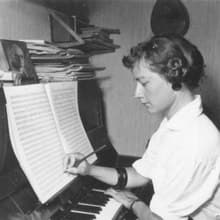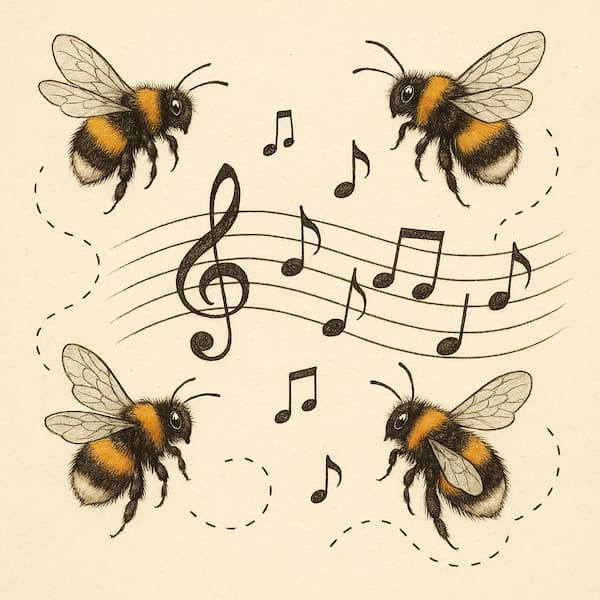Danish composer Else Marie Pade (1924-2016) was a pioneer in electronic music. Her initial music studies were in piano and composition, moving into 12-tone technique. In 1954, inspired by the first electronic composers such as Pierre Schaeffer, she became Denmark’s first electronic music. Employed at Danish Radio, she could use their facilities and broadcast time to give a series of lectures on electronic music and musique concrète.

Else Marie Pade in the mid-20th century
She was not only a composer but also was involved in using music as part of experimental arts. In one project, she worked with the National Hospital in Copenhagen, using aspects of musique concrète to stimulate the imagination of mentally handicapped students.
Her oeuvre, which spans ballets, film music, a children’s opera, instrumental and vocal works, also includes incidental music.
In 1962, she created a short instrumental piece as the incidental music for an absurdist play by the French playwright and poet René de Obaldia. His two-person play, Poivre de Cayenne, centres around two characters in striped clothing working by the side of the road in French Guiana, outside the city of Cayenne.

Michel Poujol and Bernard Boilin as Cassius and Celestin, 2012 (Petit Théâtre de Colombier) (Photo Jacky Beney)
Who are these men? Convicts? As one writer put it: ‘Are they two poor guys forgotten by men, imprisoned in a past that has disappeared forever, that they rehash endlessly? Two madmen in the middle of a delirious crisis? Two poets in the middle of a dream?’
The background is a monotonous rhythmic tone that might be the two characters’ own actions of breaking stones.

Yannick Barbe and Michel Seib as Cassius and Celestin in Poivre de Cayenne, 2019 (Companie de Poche)
La Marsailles, heard in the first part as a whole, is then broken up and played with a pulse generator, which emits short clicks and is generally used for sound measurements. Pade creates small rhythmic sequences with the pulse generator, filters the output, and then makes them into tape loops.
A high-pitched tone separates the three sections. The Three sections have the same sound material but are played at different tempos.
Else Marie Pade: Rouget de Lisle: Cayennepeber (Cayenne Pepper) (Else Marie Pade, electronics)
In the text, the two characters chat, ‘they pour out their hearts, tell each other stories, philosophise, in the flowery language’ of Paris. All elements of the characters come out through their stories: their pettiness, their stupidity, and yet, at the same time, there’s a certain poetry in the incongruity of their words, even in their ramblings. Their whole existence, from childhood, lost love, defeat, fear, and even lost laughter, comes out through their anecdotes of life.
By using the French national anthem as her musical source, Pade places the two characters in a French milieu, as much as putting ‘Cayenne’ in the title places them in a French overseas département. French Guiana, of course, was the home of the infamous Devil’s Island prison, which was open from 1852 to 1953 – fewer than 10% of prisoners survived their sentences.
By using electronics in 1962, Pade was at the forefront of digital music in the mid-20th century. As the music for an absurdist play, it has the ability to both evoke the past through the use of the national anthem and evoke the future by the work’s fracturing and looping.
For more of the best in classical music, sign up for our E-Newsletter

